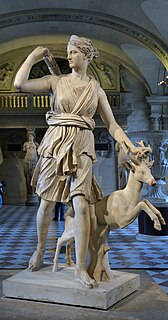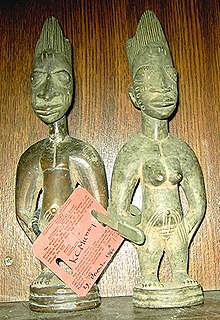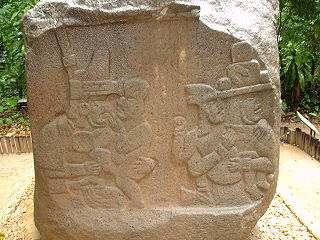 W
WThe Divine Twins are youthful horsemen, either gods or demigods, who serve as rescuers and healers in Proto-Indo-European mythology.
 W
WTwins appear in the mythologies of many cultures around the world. In some cultures they are seen as ominous, and in others they are seen as auspicious. Twins in mythology are often cast as two halves of the same whole, sharing a bond deeper than that of ordinary siblings, or seen as fierce rivals. They can represent another aspect of the self, a doppelgänger, or a shadow. However, twins can also reflect a complete opposition of the other, such as the "civilized" Gilgamesh, and the "wild" Enkidu; or in the commonly known instance of good and evil twin identities.
 W
WApollo is one of the Olympian deities in classical Greek and Roman religion and Greek and Roman mythology. The national divinity of the Greeks, Apollo has been recognized as a god of archery, music and dance, truth and prophecy, healing and diseases, the Sun and light, poetry, and more. One of the most important and complex of the Greek gods, he is the son of Zeus and Leto, and the twin brother of Artemis, goddess of the hunt. Seen as the most beautiful god and the ideal of the kouros, Apollo is considered to be the most Greek of all the gods. Apollo is known in Greek-influenced Etruscan mythology as Apulu.
 W
WArtemis is the Greek goddess of the hunt, the wilderness, wild animals, the Moon, and chastity. The goddess Diana is her Roman equivalent.
 W
WAšvieniai are divine twins in the Lithuanian mythology, identical to Latvian Dieva dēli and the Baltic counterparts of Vedic Ashvins. Both names derive from the same Proto-Indo-European root for the horse – *ék̂wos: Old Lithuanian ašva and Sanskrit ashva mean "horse". Like the Greek Dioscuri Castor and Pollux, they are reflexes of a common Indo-European mytheme, the Divine Twins.
 W
WThe Ashvins, also known as Ashwini Kumara and Asvinau, are Hindu twin gods associated with medicine, health, dawn and sciences. In the Rigveda, they are described as youthful divine twin horsemen, travelling in a chariot drawn by horses that are never weary, and portrayed as guardian deities that safeguard and rescue people by aiding them in various situations.
 W
WCastor and Pollux are twin half-brothers in Greek and Roman mythology, known together as the Dioscuri.
 W
WGemini (♊︎) is the third astrological sign in the zodiac, originating from the constellation of Gemini. Under the tropical zodiac, the sun transits this sign between about May 21 to June 21. Under the sidereal zodiac, the sun transits this sign from about June 16 to July 16. Gemini is represented by the twins, Castor and Pollux, known as the Dioscuri in Greek mythology. It is a positive, mutable sign. Gemini is associated with the Yang polarity (masculine) in the Yin Yang ancient Chinese concept.
 W
WIbeji is the name of an Orisha representing a pair of twins in the Yoruba religion of the Yoruba people. In the diasporic Yoruba spirituality of Latin America, Ibeji are syncretized with Saints Cosmas and Damian. In Yoruba culture and spirituality, twins are believed to be magical, and are granted protection by the Orisha Shango. If one twin should die, it represents bad fortune for the parents and the society to which they belong. The parents therefore commission a babalawo to carve a wooden Ibeji to represent the deceased twin, and the parents take care of the figure as if it were a real person. Other than the sex, the appearance of the Ibeji is determined by the sculptor. The parents then dress and decorate the ibeji to represent their own status, using clothing made from cowrie shells, as well as beads, coins and paint.
 W
WLel and Polel are Polish divine twins, first mentioned by Maciej Miechowita in the 16th century where he presents them as equivalents of Castor and Pollux and the sons of the goddess Łada, the equivalent of Leda. There is no complete agreement about the authenticity of the cult of Lel and Polel.
 W
WThe Maya Hero Twins are the central figures of a narrative included within the colonial Kʼicheʼ document called Popol Vuh, and constituting the oldest Maya myth to have been preserved in its entirety. Called Hunahpu [hunaxˈpu] and Xbalanque [ʃɓalaŋˈke] in the Kʼicheʼ language, the Twins have also been identified in the art of the Classic Mayas. The twins are often portrayed as complementary forces. The complementary pairings of life and death, sky and earth, day and night, Sun and Moon, among multiple others have been used to represent the twins. The duality that occurs between male and female is often seen in twin myths, as a male and female twin are conceptualized to be born to represent the two sides of a single entity.
 W
WNara-Narayana is a Hindu deity pair. Nara-Narayana is the twin-brother avatar of the god Vishnu on Earth, working for the preservation of Dharma or righteousness.